You don’t always need flashy tricks to get noticed. Sometimes, all it takes is a smartly placed QR code and one curious scan to start something big.
Didn’t we all think QR codes were a passing fad? Well, they’re back with a bang. You can spot them everywhere (coffee cups, storefronts, billboards, venus, packaging, social platforms, you name it). The best part is that they’re quick, cost-effective, and ridiculously easy to use.
With just one scan, you can guide people straight to your website, product page, portfolio, event registration, or just about anywhere you want them to be. No typing, no hassle—just action. In 2025, QR code usage is estimated to grow by 22%. No wonder why brands of all sizes are now baking QR codes into their marketing game plan.
Whether you’re trying to boost engagement, simplify customer journeys, or bridge the gap between your physical and digital presence, QR codes can handle it with a simple scan. And with customizable QR code generators, you can make them on-brand, beautifully designed, and instantly impactful.
Before we discuss some clever, real-world ideas for using QR codes in your small business marketing, let’s briefly outline what they are.
What are QR Codes: An Overview
QR codes have been around longer than you might think. First created in 1994 by Denso Wave (a Toyota subsidiary), they were originally used to track car parts. But over time, their purpose grew beyond factory floors. Today, they’re everywhere.
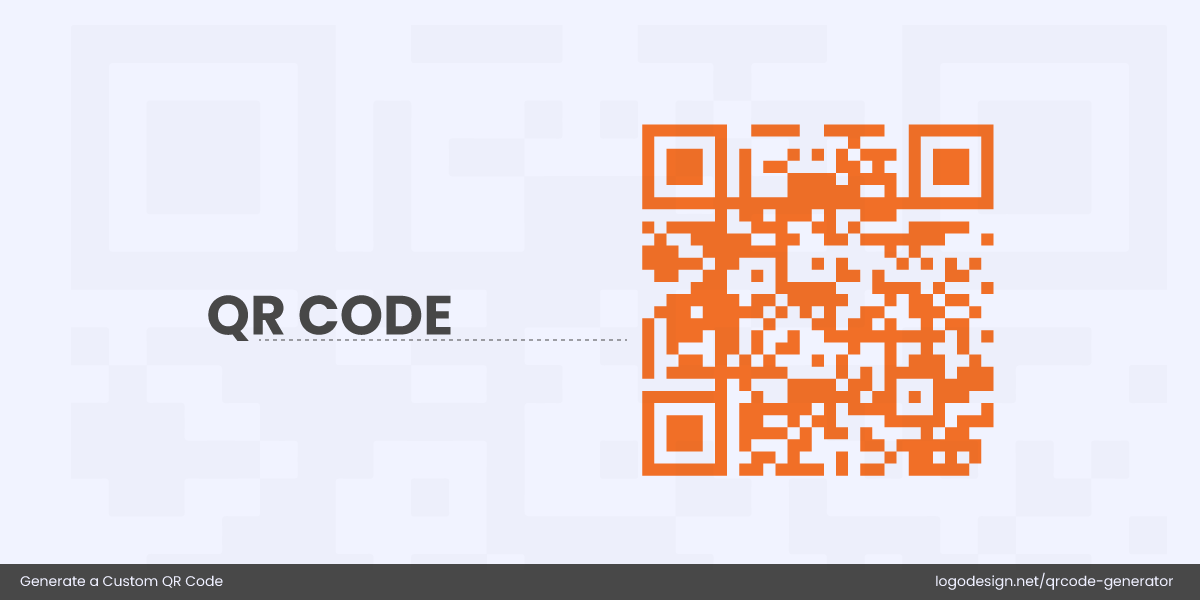
A QR code is a scannable square that quickly links you to info, sites, or actions with your phone
QR stands for Quick Response, and that pretty much explains it. With one scan, your customer is exactly where you want them. Scanning them is quite simple, too. Almost every smartphone now has a built-in QR code reader through the camera app. All you have to do is point, tap, and go.
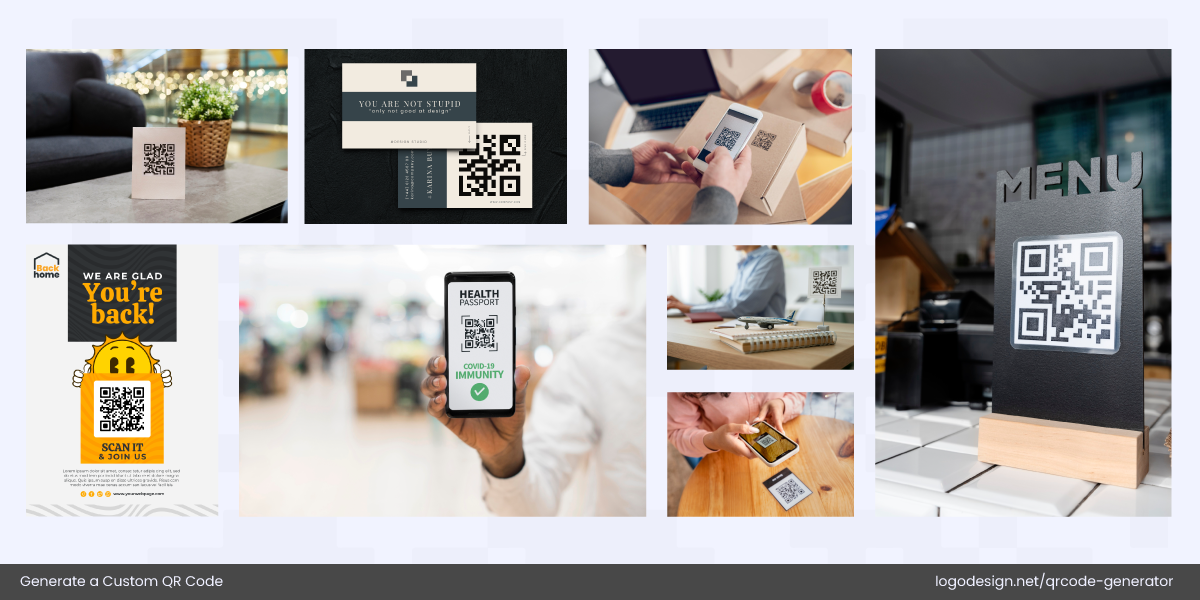
QR codes can be placed on various touchpoints such as packaging, posters, business cards, and product tags.
In marketing, QR codes act as a direct link between your physical and digital touchpoints. Whether you’re directing people to a landing page, encouraging sign-ups, or prompting a quick call or message, a well-placed QR code removes all friction. That’s why marketers love them.
Strategic Ways to Include QR Codes in Marketing
QR codes are the bridge between printed collateral and engaging digital experiences. Used thoughtfully, they can transform static media into powerful brand moments. Here are impactful ways to incorporate them into your marketing:
1. Business Cards That Expand Your Story
If a business card is a handshake, a QR code is its portal. Imagine handing someone a sleek card with your business logo and a QR code that scans directly to your portfolio, website, LinkedIn profile, or a welcome video. It answers the common marketer’s question about what to put on a business card beyond just contact details.
Even better, use a dynamic QR code so you can change the linked destination anytime without reprinting. It’s perfect if your portfolio evolves or a special campaign launches. So in a crowded world where your business card has seconds to impress, adding a QR code lets you say more without overcrowding the card.
This is a perfect example of a sleek business card with contact details on the front and a logo with a QR code on the back.
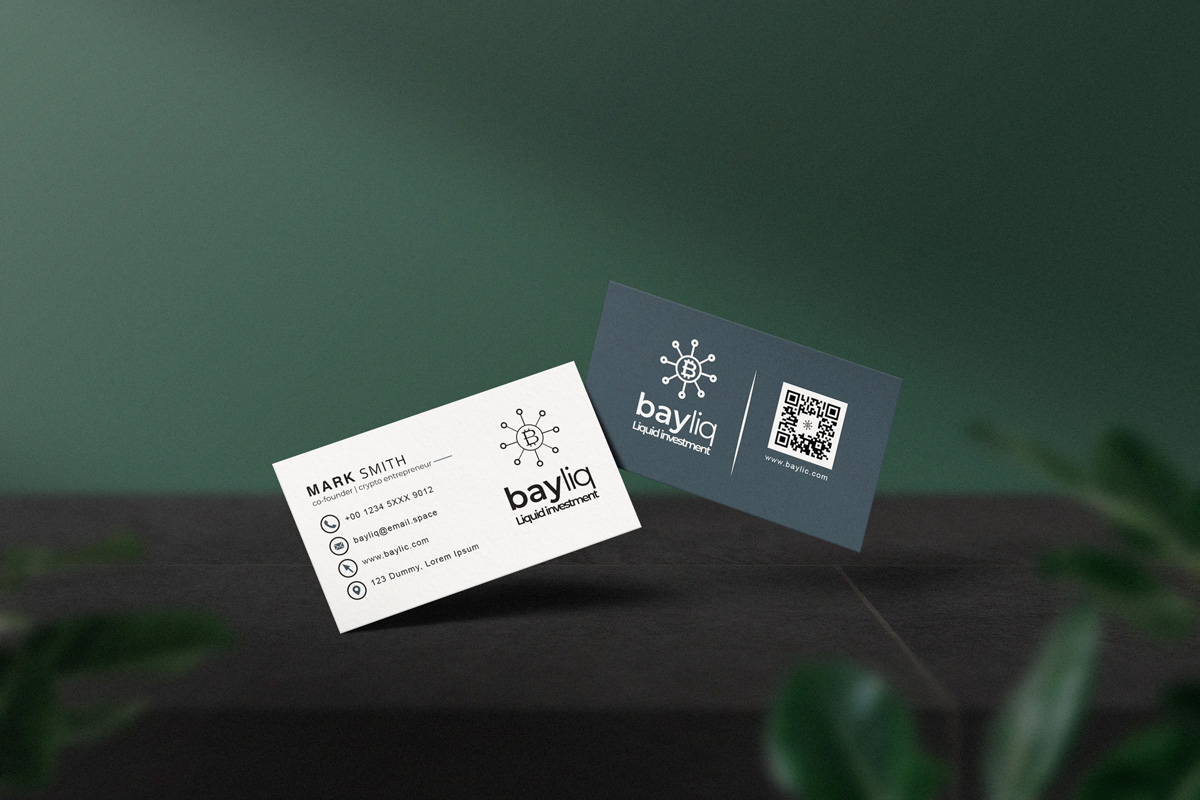
A crypto company business card featuring a QR code — Design credit: Behance/Fleur Aura
Minimalism in design is great, but a pop of color never misses its mark. You can also take inspiration from this one:
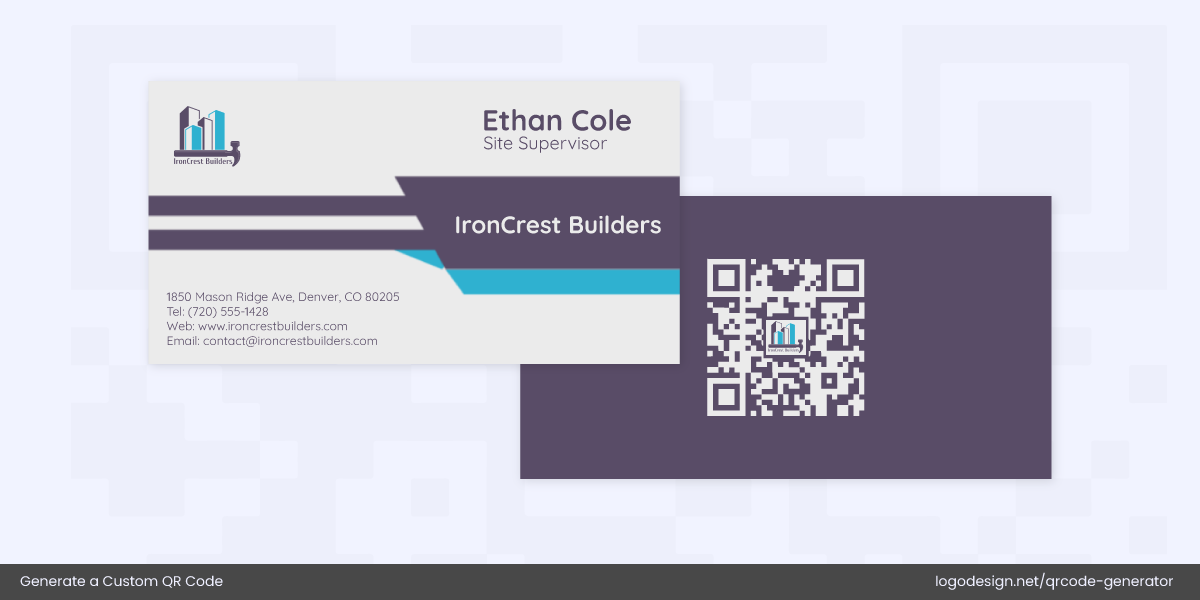
A construction company business card featuring a colorful QR code – LogoDesign.Net/Construction
2. Brochures and Flyers Turned Interactive
Brochures and flyers aren’t going anywhere—they’re powerful tools for spreading the word. However, static flyers and brochures are passé, but one with a QR code woven into smart design can become a smart engagement tool. That’s what Elan Spa found out, making them use QR codes on their brochures, business cards, and other promotional products.
With just one scan, you can connect people to a product demo, booking page, or even a behind-the-scenes video. It adds movement to the paper.
Take this eye-catching flyer for a cab-hailing service, for example. See how it strategically places a QR code that leads directly to a quick app download, making conversion almost effortless.
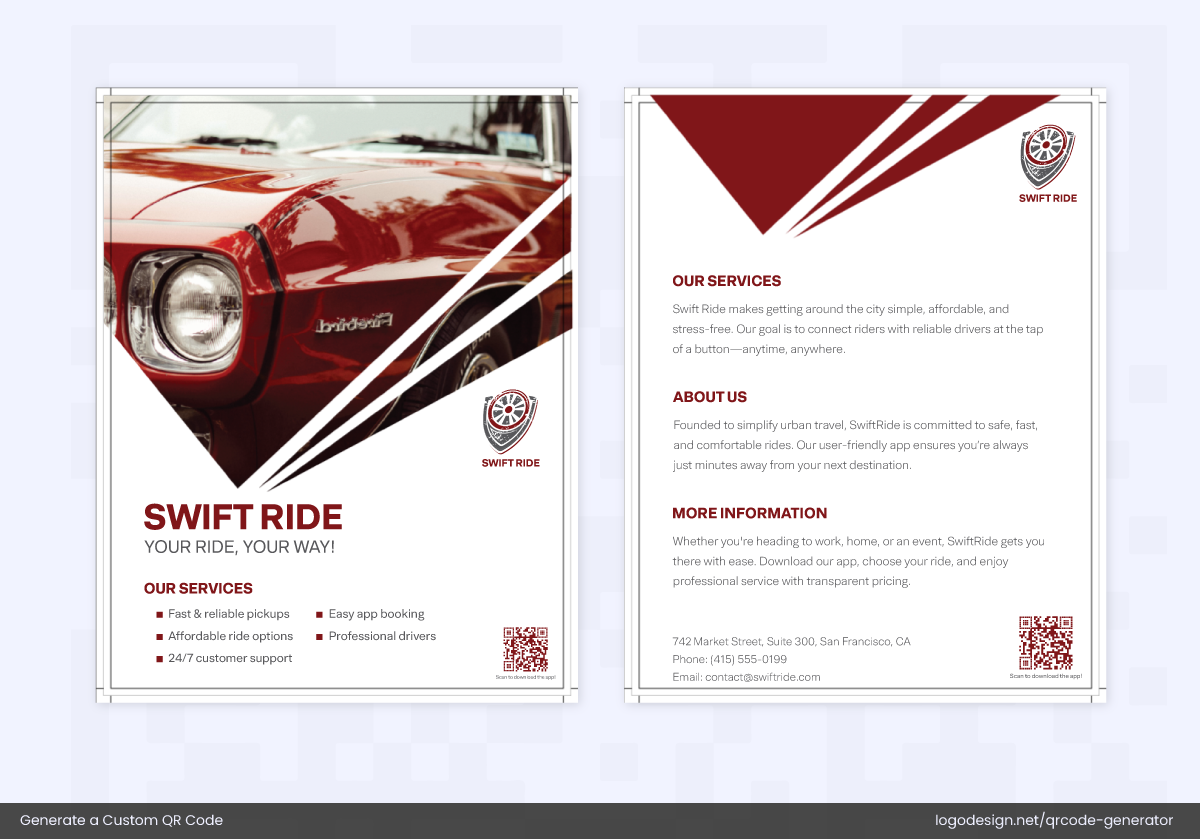
A ride booking company flyer featuring a custom-generated QR code – Design Credit: LogoDesign.Net/Ride-Booking Service
Or look at this sleek medical brochure that uses a QR code to guide visitors to book appointments online.
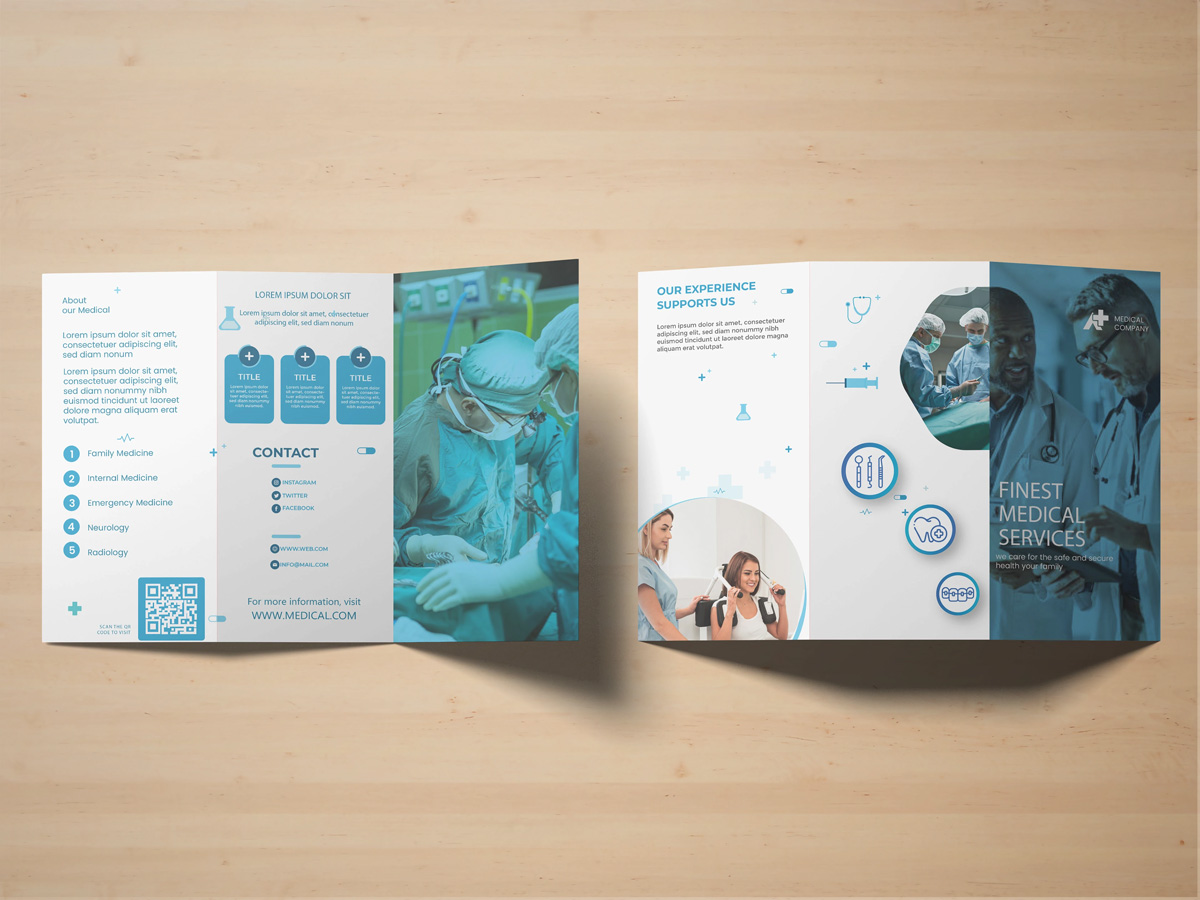
A medical company flyer featuring a QR code — Design credit: Behance/Jihad Sowdagor
Flyers are effective in 2025—but pair them with a QR code, and they can become unforgettable.
3. Generate Leads from Every Email You Send
Your email signature is more than just a sign-off; it’s prime real estate for subtle marketing. One smart way to use it? Add a QR code. Whether it links to your latest product, booking page, or directly dials your sales team, that tiny square can turn passive emails into lead-generating tools.
It’s a small tweak, but one with a big impact. The branding power of an email signature lies in how consistently and professionally you show up in inboxes, and adding a QR code only amplifies that.
Take a look at this clean example where the QR code feels natural and useful, not forced.
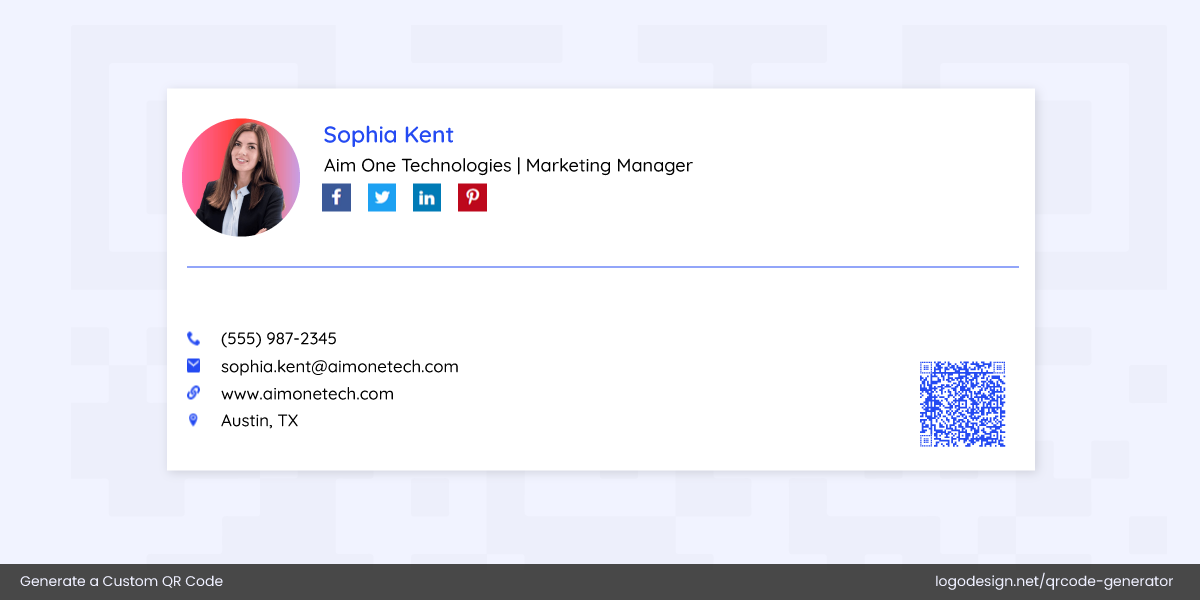
A custom email signature for a tech marketing professional featuring a tailored QR code – Design Credit: LogoDesign.Net/Email Signature Template
4. Merge Merch with Marketing Power
Customized merch alone can be highly impactful in bringing high quality leads, as BlueRock found out. Apart from visibility, branded merch is a chance to spark interaction. Adding a QR code to everyday items like mugs, t-shirts, tote bags, or water bottles gives your merchandise a second job: marketing. Imagine someone sipping coffee from your branded mug and noticing a small code under the logo. One quick scan, and they’re on your latest product page, promo video, or even a discount offer.
It’s a subtle way to blend offline charm with online reach, especially during trade shows, giveaways, or team events. Not only does it boost engagement, but it also makes your merch feel interactive and more purposeful.
Have a look at this QR t-shirt design or this mug with a QR code for some creative inspiration.
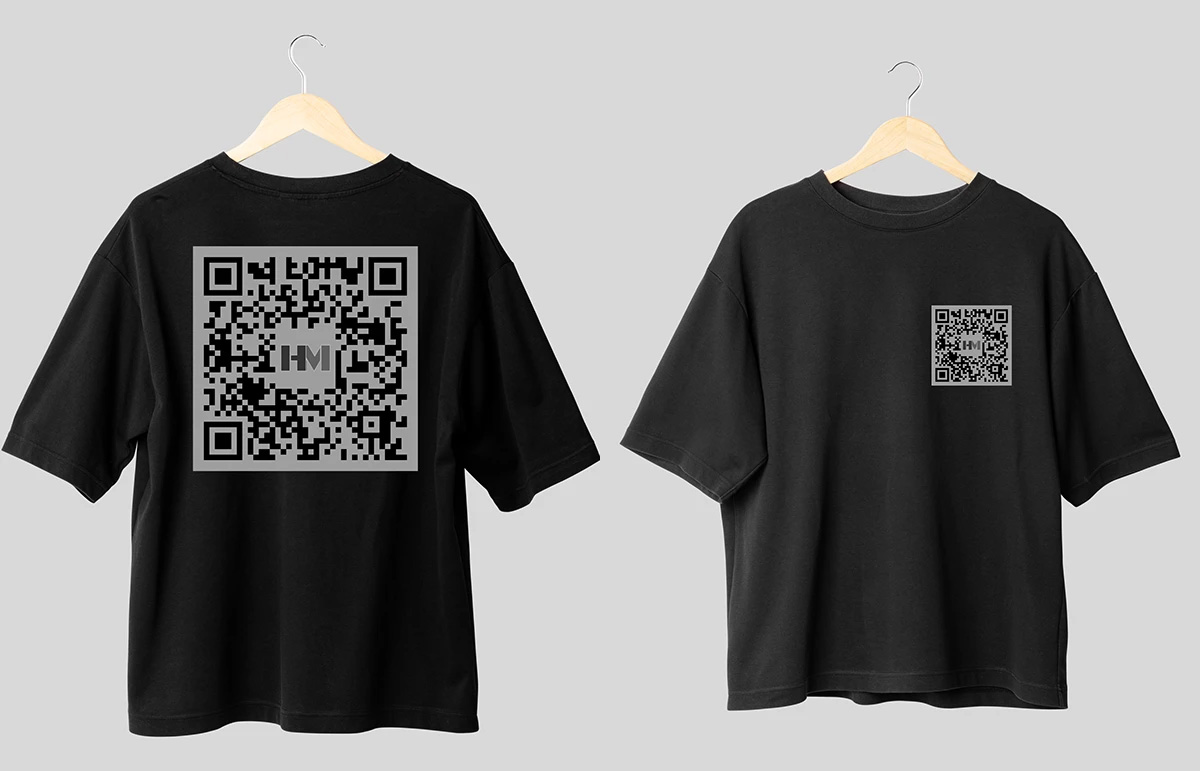
A black T-Shirt featuring a customized QR code — Design Credit: Behance/HM Media
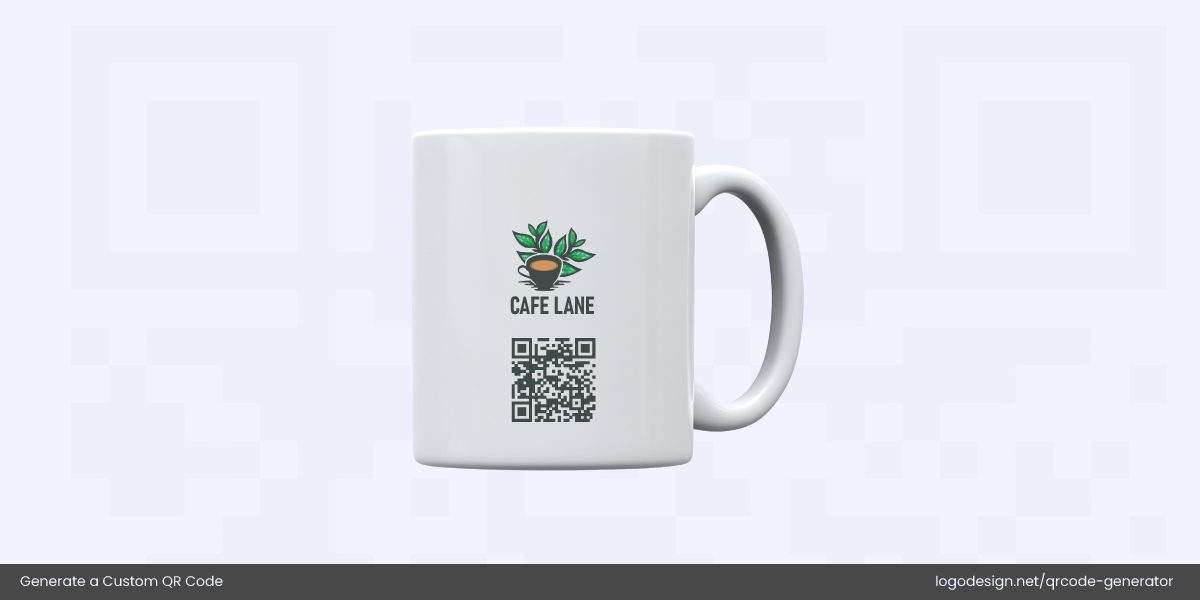
Mug customized with a trackable QR code – Design Credit: LogoDesign.Net/Mug
5. Modern Dining with Quick Scans
QR codes have quietly revolutionized how restaurants connect with diners. Instead of cluttered paper menus or waiting for staff, a quick scan on a table tent or menu takes customers straight to an online version—easy to update, mobile-friendly, and interactive. But why stop there?
You can link to allergen info, daily specials, behind-the-scenes chef videos, or even your Instagram for mouthwatering visuals. It’s convenience, marketing, and storytelling rolled into one neat little square. Plus, it’s hygienic, cost-effective, and adds a modern edge to your dining experience.
Need inspiration? Check out this fast-food chain’s restaurant logo along with a QR code featured on the menu as well as on the table tent. It lets guests easily scan and explore.
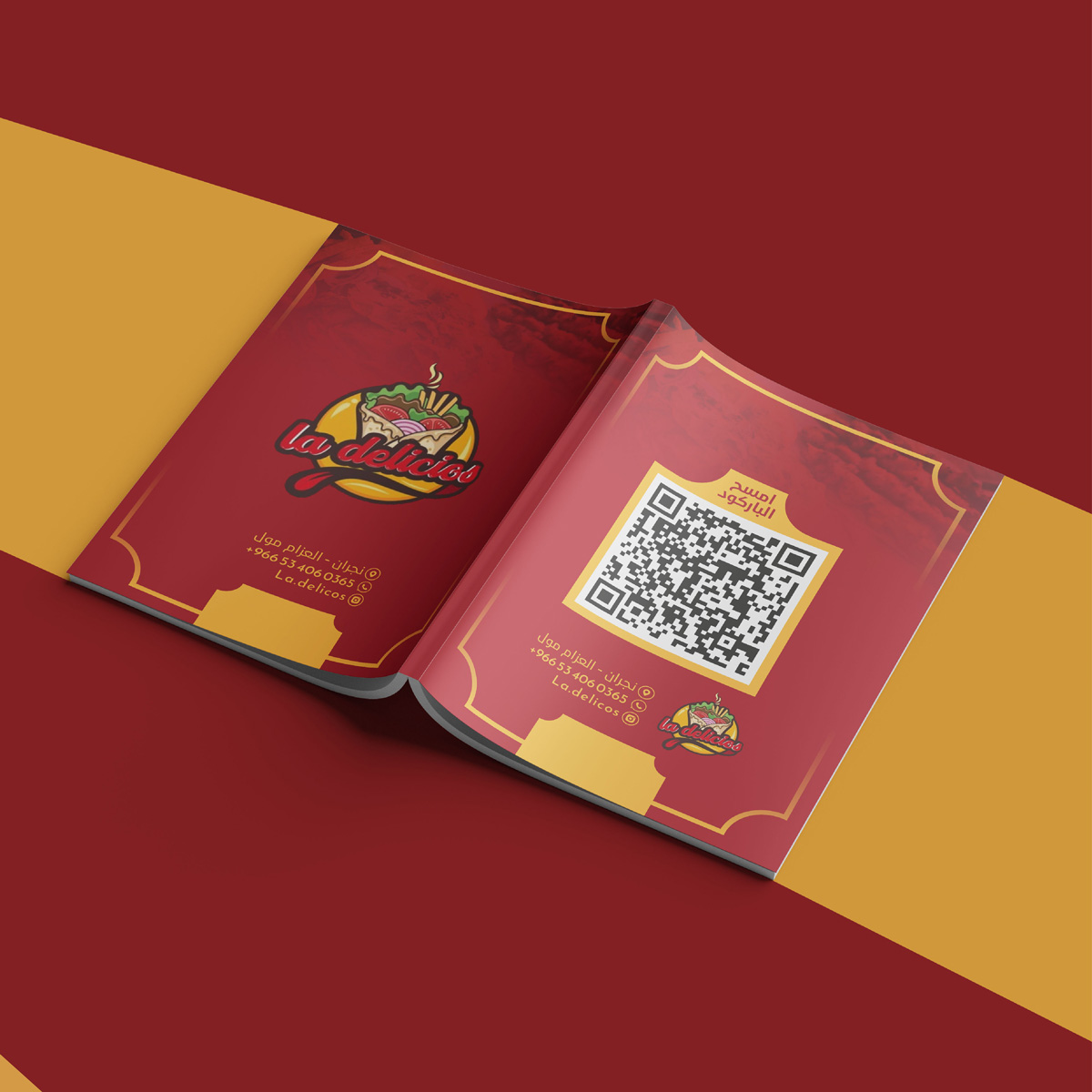
A red and yellow restaurant menu featuring a QR code — Design credit: Behance/CIM Code

A red and yellow restaurant table tent featuring a QR code — Design credit: Behance/CIM Code
6. Make Your Billboards Instantly Actionable
A bold headline and a QR code, that’s all it takes to turn a passing glance into real engagement. Outdoor ads usually get just a few seconds of attention, but a well-placed QR code can extend that moment. With a quick scan, someone stuck in traffic or walking by can land on your website, claim a discount, watch a teaser video, or even pre-order a product.
It bridges offline visibility with online interaction, making your billboard work harder than ever. QR codes are especially powerful in urban spaces where people are already glued to their phones.
Calvin Klein’s QR code on the billboard campaign was a hit. It set a new standard for QR-powered outdoor advertising with giant red QR codes dominating billboards in NYC and LA. Scanning one launched a mobile video ad for the new Calvin Klein Jeans line.

Calvin Klein used a QR code on a billboard as part of a marketing campaign. – Credit: Racked.com
Here’s another example for you to check out:
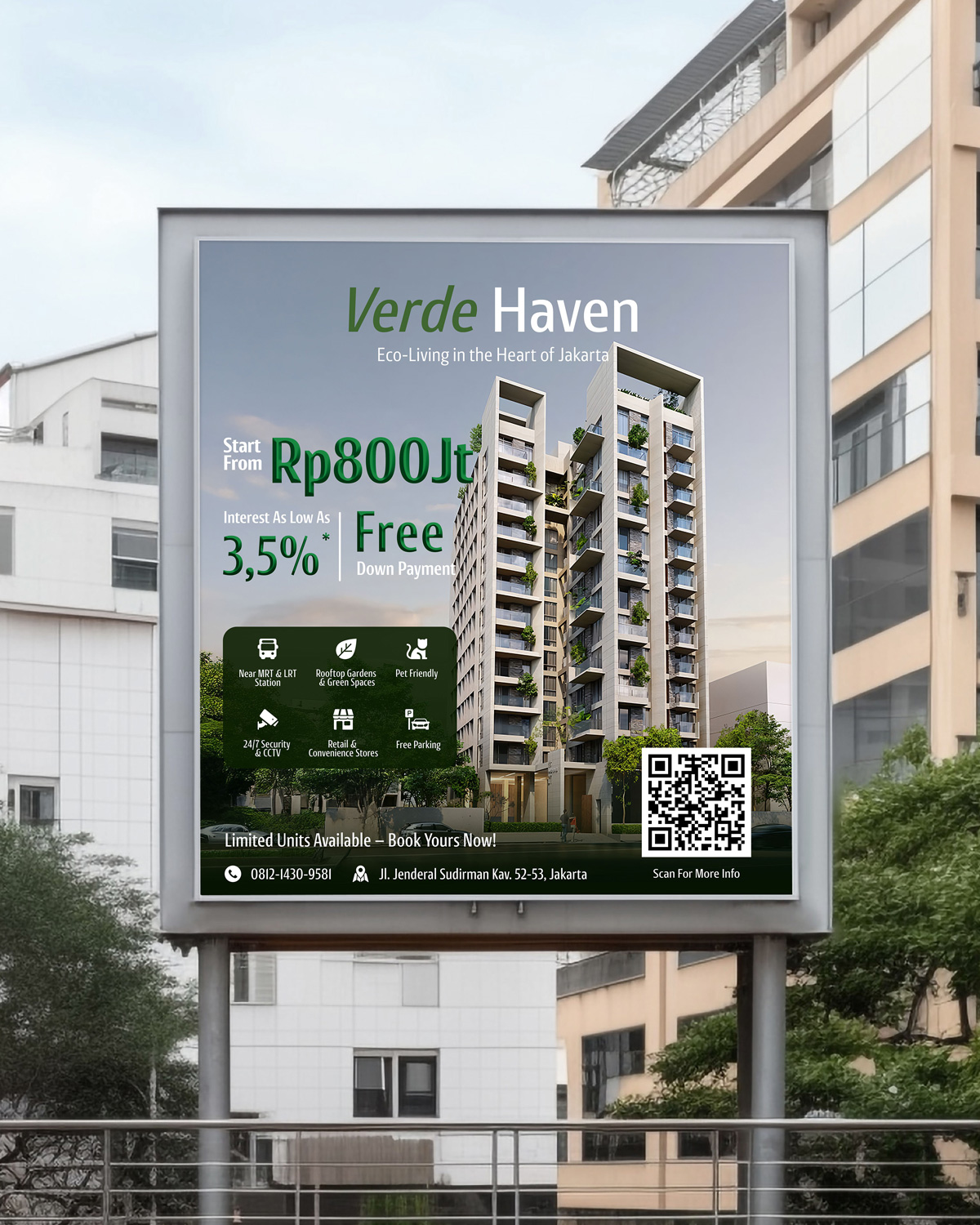
A real estate company billboard featuring a custom QR code. Design Credit: Behance/Adrian Attha Danendra
7. Smarter Event Invites and Tickets
Planning an event? QR codes can streamline everything from registration to entry. Whether it’s a virtual webinar, conference, or in-person launch party, adding a QR code to your event invitations or tickets makes things incredibly easy for your guests. With just one scan, they can RSVP, view the full event schedule, access a venue map, or even unlock bonus content like speaker bios or a welcome message.
It also simplifies check-ins, with no printed tickets or last-minute email searches. Attendees just scan at the door, and they’re in. You can even track attendance or link to feedback forms post-event.
Many concerts and festivals already do this. A QR on the ticket might lead to an interactive artist playlist, merch discount, or real-time schedule updates.
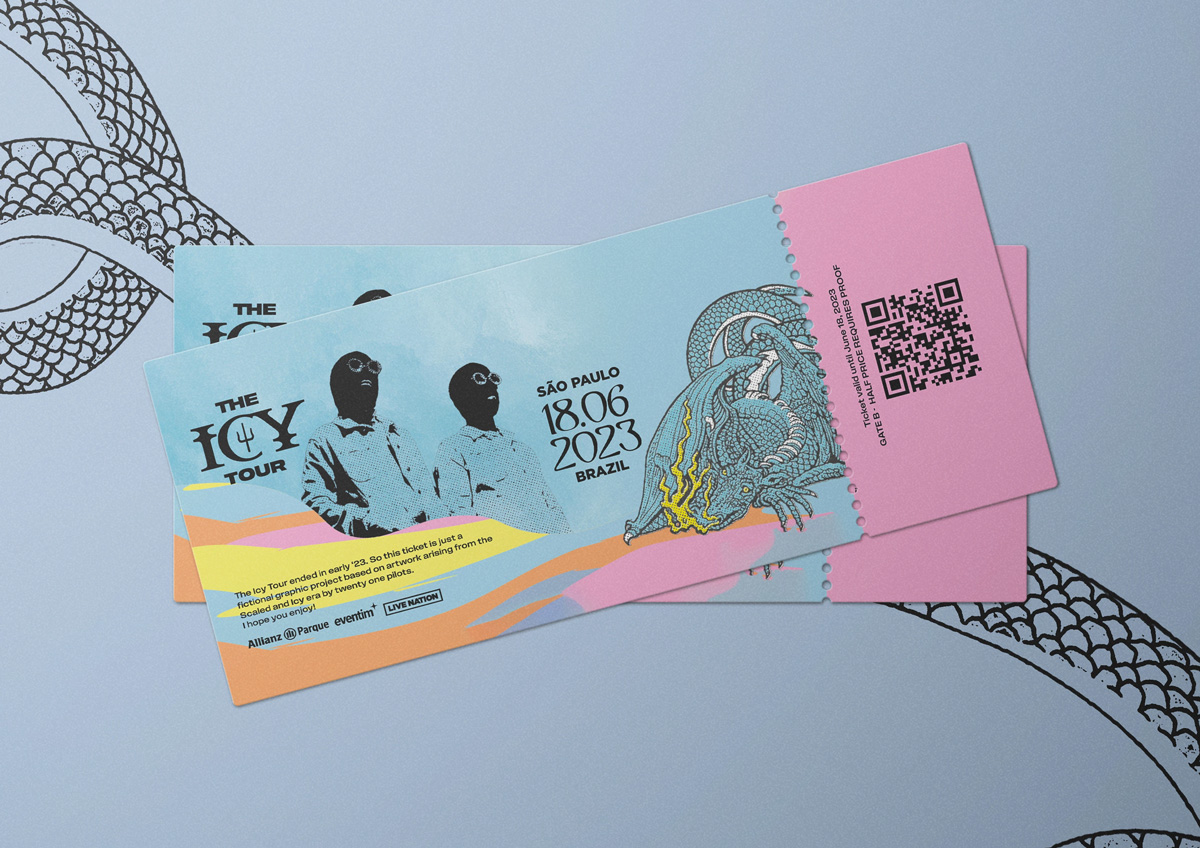
A custom-designed concert ticket featuring a personalized QR code. Design Credit: Behance/Júlia Soares
Here’s another example of a QR code on a wedding invite.
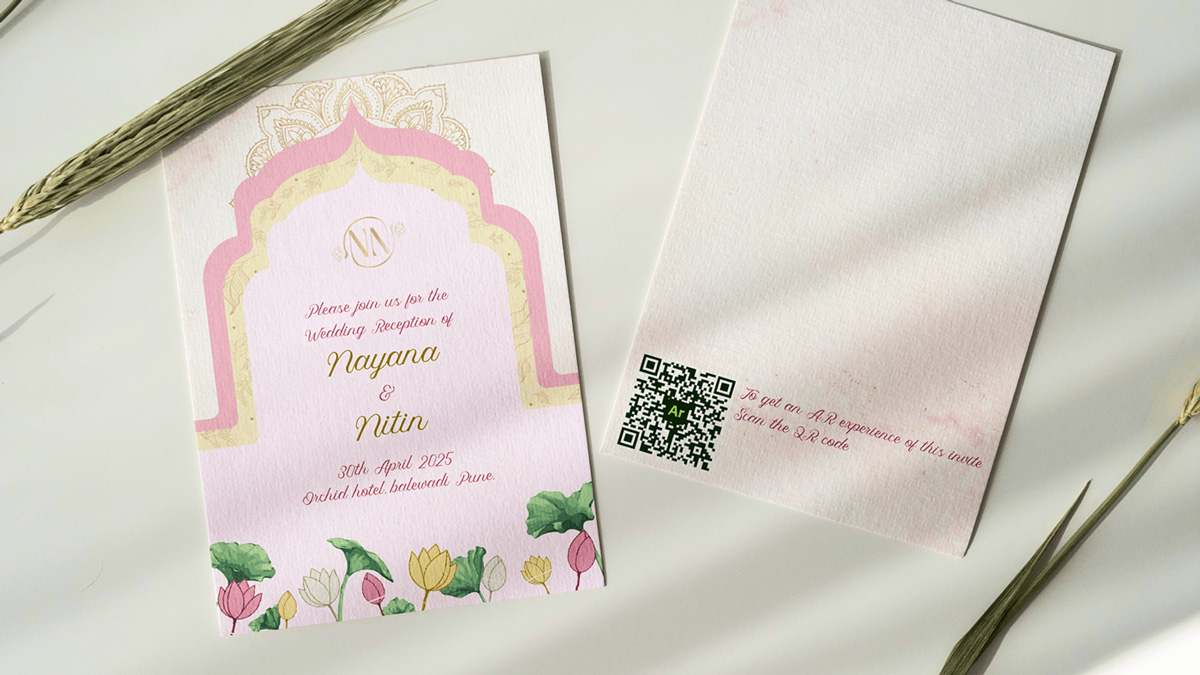
A blush pink wedding invite featuring a black and white QR code. Design Credit: Behance/Aditi Srivastava
8. Connect Consumers Through Product Packaging
Your packaging doesn’t have to stop at looking good. Adding a QR code to your product packaging is one of the smartest (and simplest) ways to extend customer interaction beyond the shelf. One scan can open up a how-to video, customer reviews, usage tips, warranty registration, or even a behind-the-scenes story about how the product was made.
This approach builds a connection. It’s especially useful for beauty, electronics, food, and lifestyle products where consumers want to know more than just what’s in the box. And since it’s printed right on the product, it keeps working long after purchase.
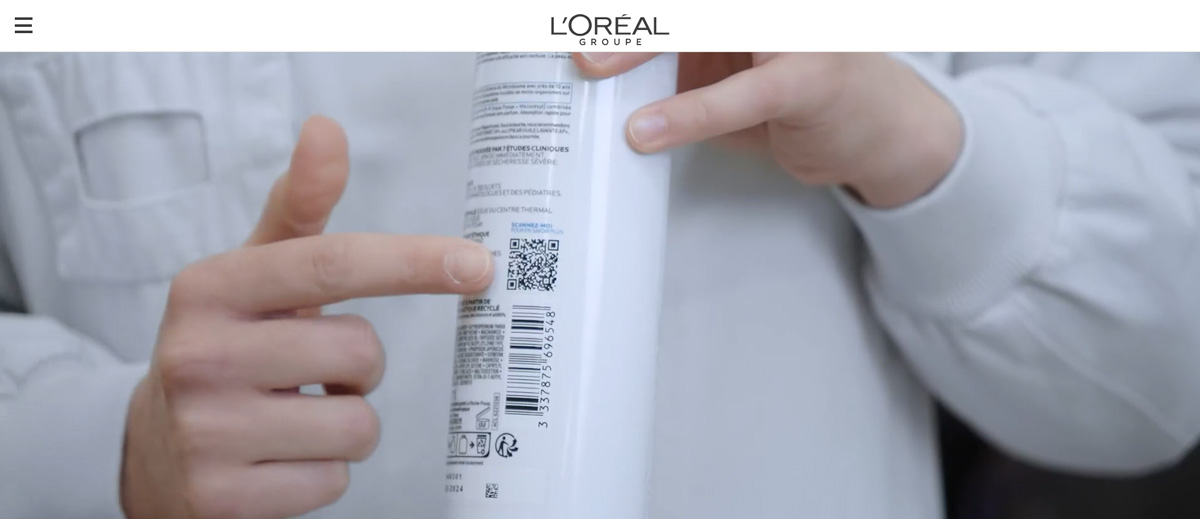
The beauty brand L’Oréal features custom QR codes on all its product packaging.
Brands like L’Oréal have used QR codes on packaging to deliver ingredient info and sustainability practices.
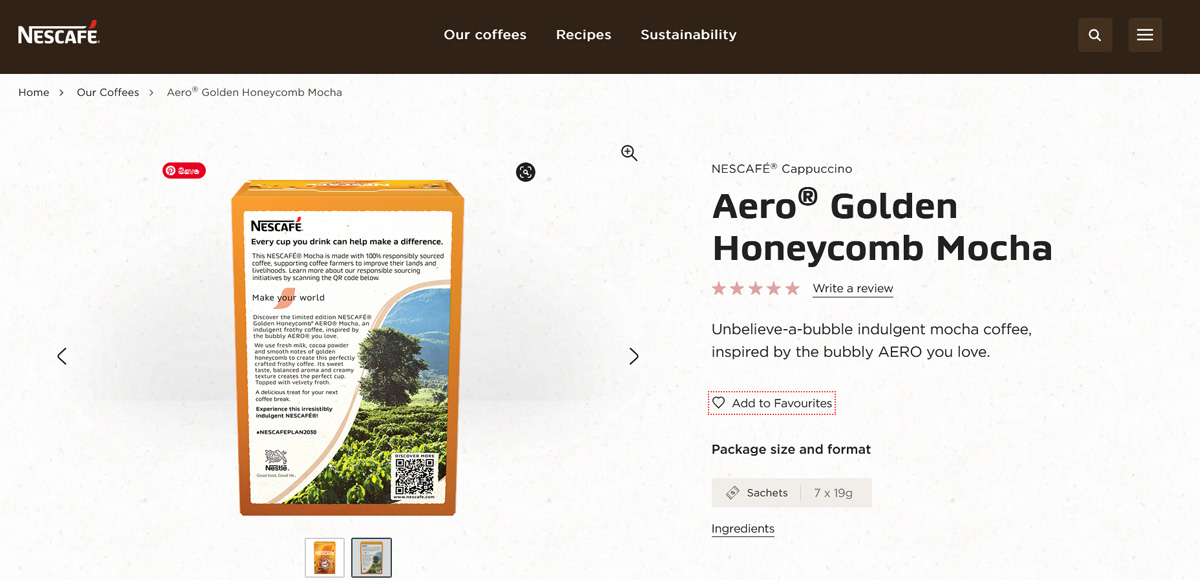
Nestlé includes custom QR codes on its product packaging to share details and engage consumers
Nestlé empowers consumers with QR codes on its products, which, when scanned, take users to sites where they can find detailed information about what they are made up of and how they fit into a balanced diet.
This low-cost move adds real value and makes your packaging work double duty.
9. Encourage Instant Customer Feedback
Customer reviews are one of the most powerful tools for building trust and influencing new buyers. In fact, 93% of consumers say that online reviews impact their purchase decisions—so why not make it easy for happy customers to leave one?
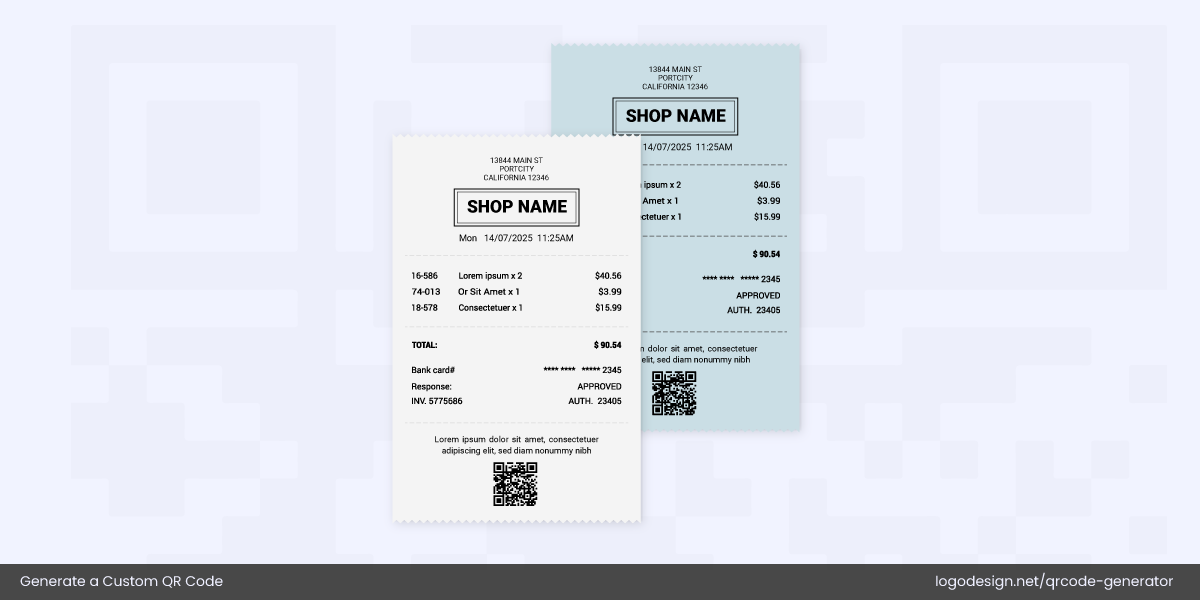
A shopping receipt featuring an auto-generated QR code
By placing a QR code at your checkout counter, on receipts, or even tucked into product packaging or thank-you cards, you’re offering a low-effort way for customers to scan and share their experience. No need to search for your business online or dig through emails—just scan and review.
This simple move not only helps you gather valuable feedback but also boosts your visibility on platforms like Google, Yelp, or Trustpilot. And the best part? It takes just seconds, but the impact on your online reputation can be long-lasting.
10. Streamline App and Website Navigation
QR codes aren’t just for physical spaces; they can enhance your digital platforms, too. By integrating QR codes into your website or app experience, you make navigation faster and more intuitive. For instance, a QR code can take users directly to a popular product page, a promotional landing page, or even your customer support portal.
This is especially helpful for printed materials or in-person displays—just one scan can bring customers straight into your digital ecosystem, without the need to search or click around. It’s a smart way to reduce friction, guide users to key content, and improve overall engagement with your brand online.
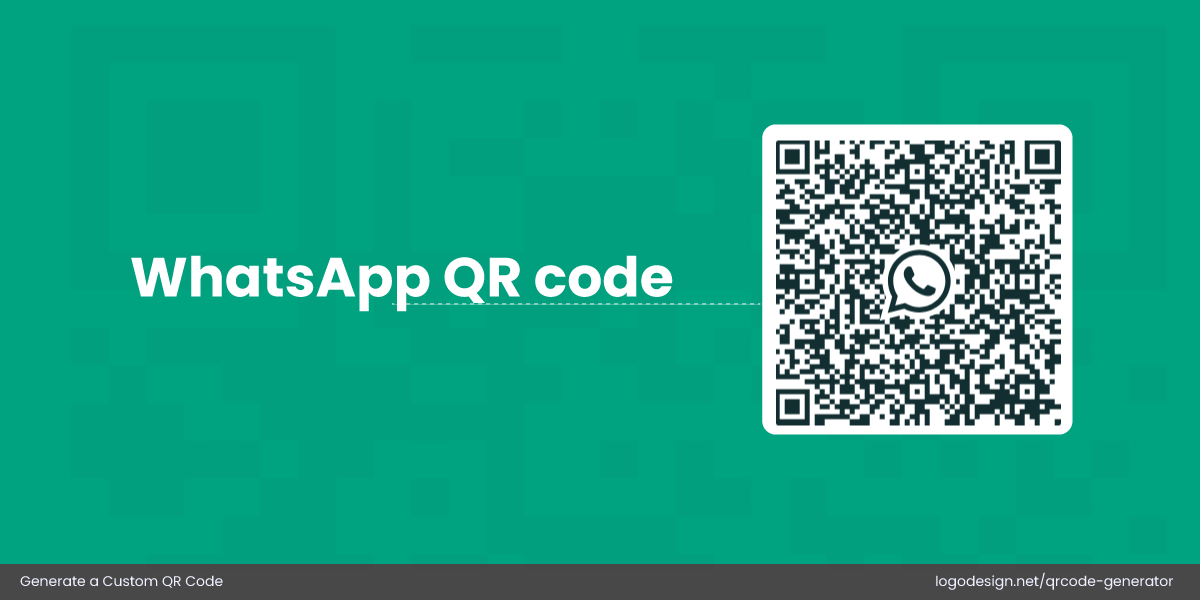
WhatsApp Web’s homepage displays a QR code for quick login by scanning with the mobile app.
WhatsApp Web’s homepage shows a large QR code that users scan with the WhatsApp mobile app to sync and log into their browser session without typing a password.
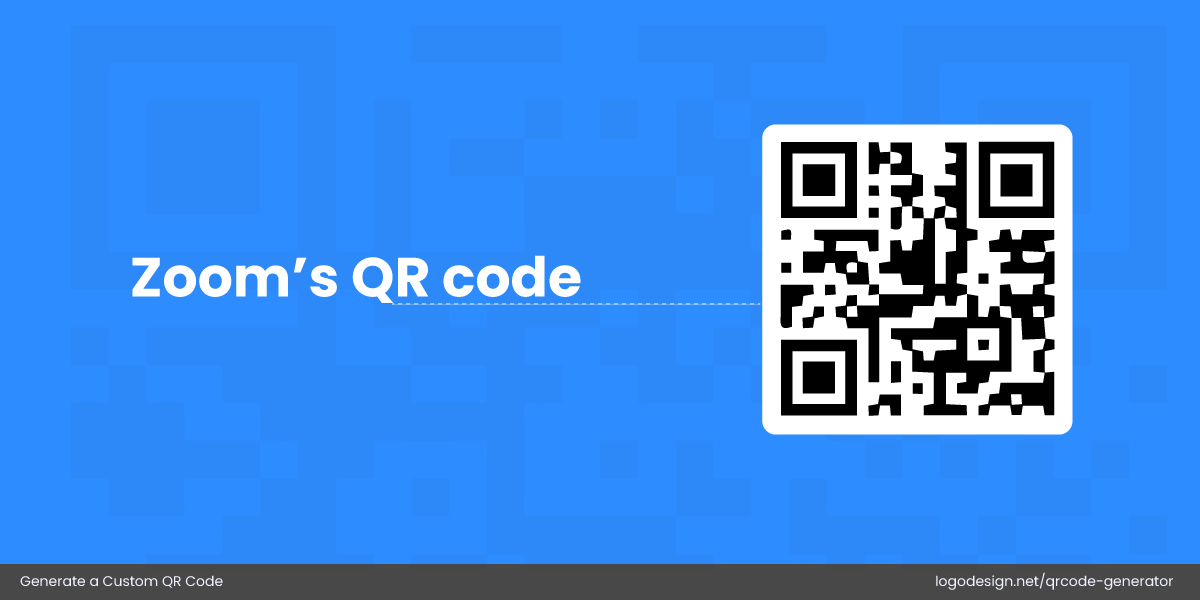
Zoom’s login page offers a QR code that users scan with the mobile app to sign in instantly
Similarly, Zoom also provides QR codes in meeting invites so attendees can join quickly via mobile.
How to Create a QR Code in Easy Steps
Creating a QR code is a simple process that doesn’t require any technical skills. Using a QR code generator like the one on LogoDesign.Net, you can make a custom code in just a few steps:
Step 1: Enter Your Information
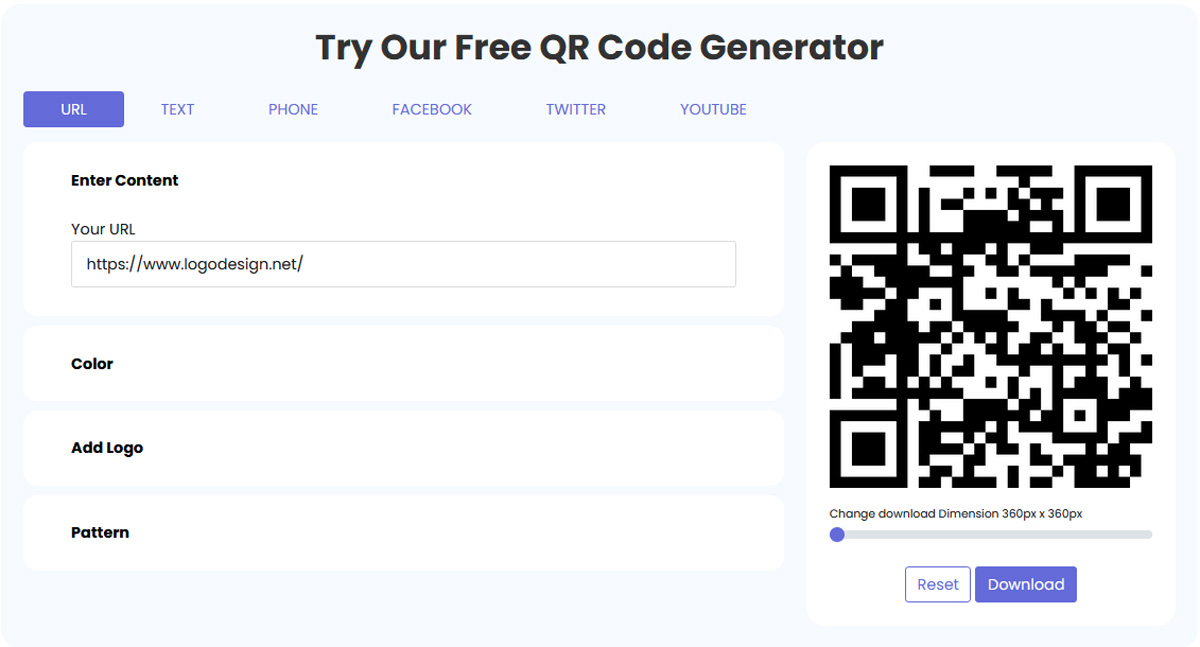
Enter your destination URL and other details to start generating a QR code
Start by entering the URL, text, or other information you want the QR code to link to. This could be a website, social media page, video, event details, or anything else you want to share. The generator supports different types of QR codes depending on your needs.
Step 2: Personalize Your QR Code
Make your QR code stand out and align with your branding by customizing these elements:
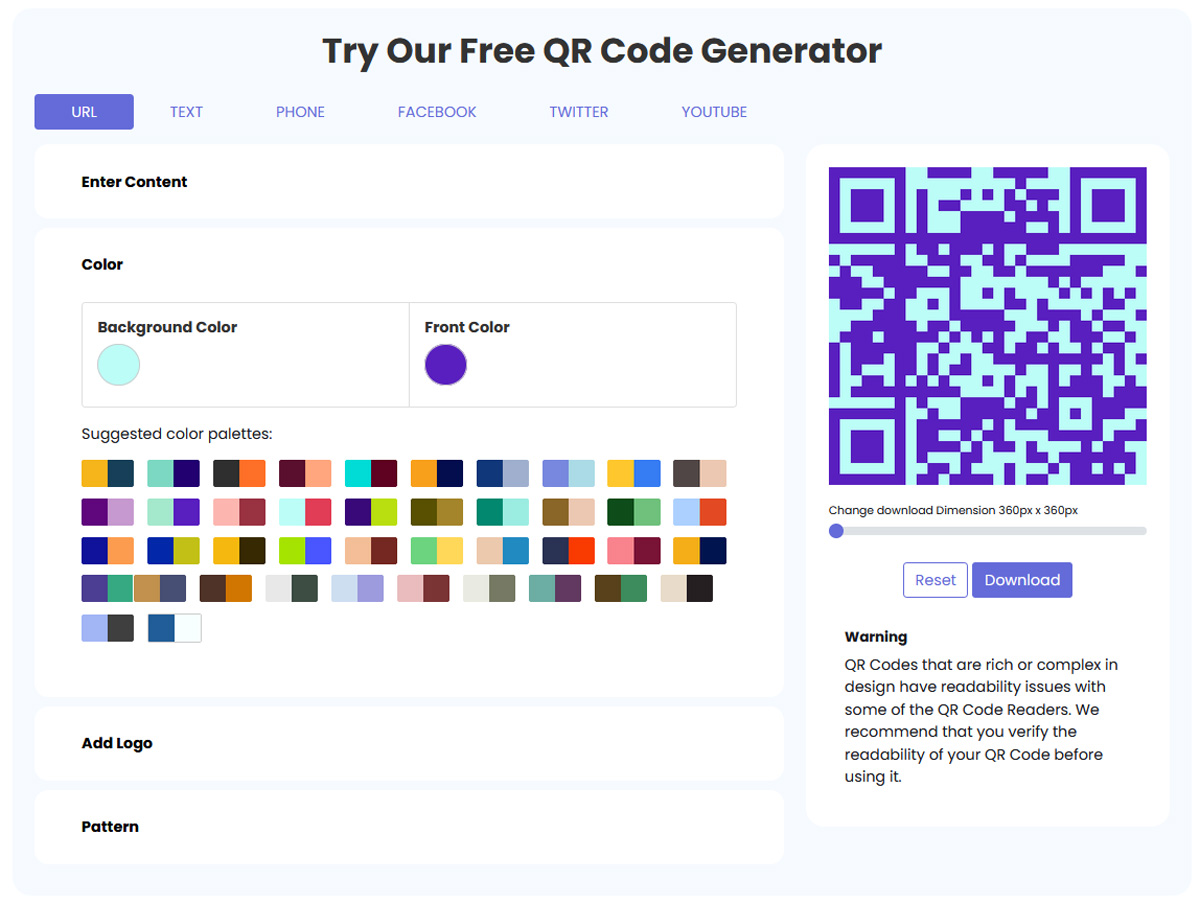
Pick colors for your free QR code to create a customized look.
- Colors: Choose back and front colors that fit your brand’s palette or campaign theme. This helps your QR code blend seamlessly with your design while remaining easy to scan.
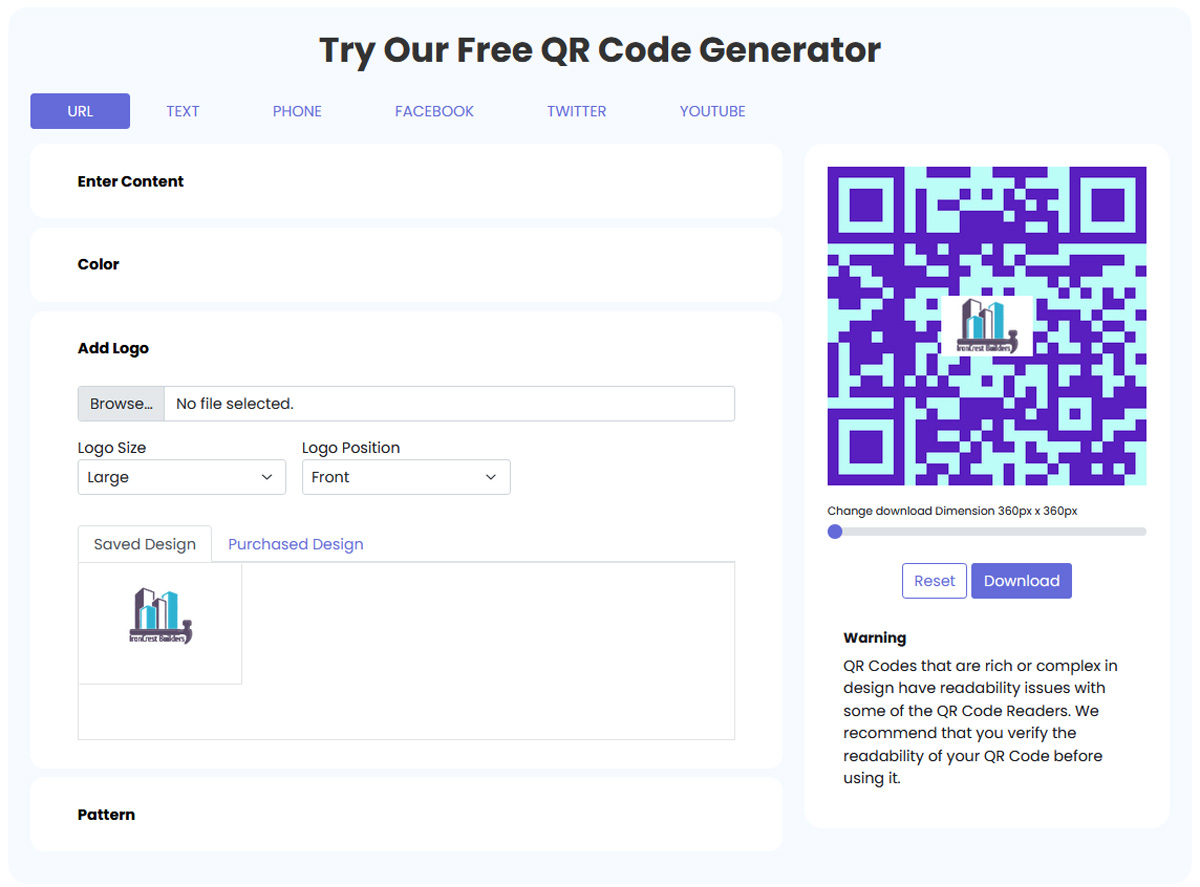
Add business logo to your QR code.
- Logo: Add your company logo in the center of the QR code to boost brand recognition. This small touch makes your code more memorable and professional-looking.
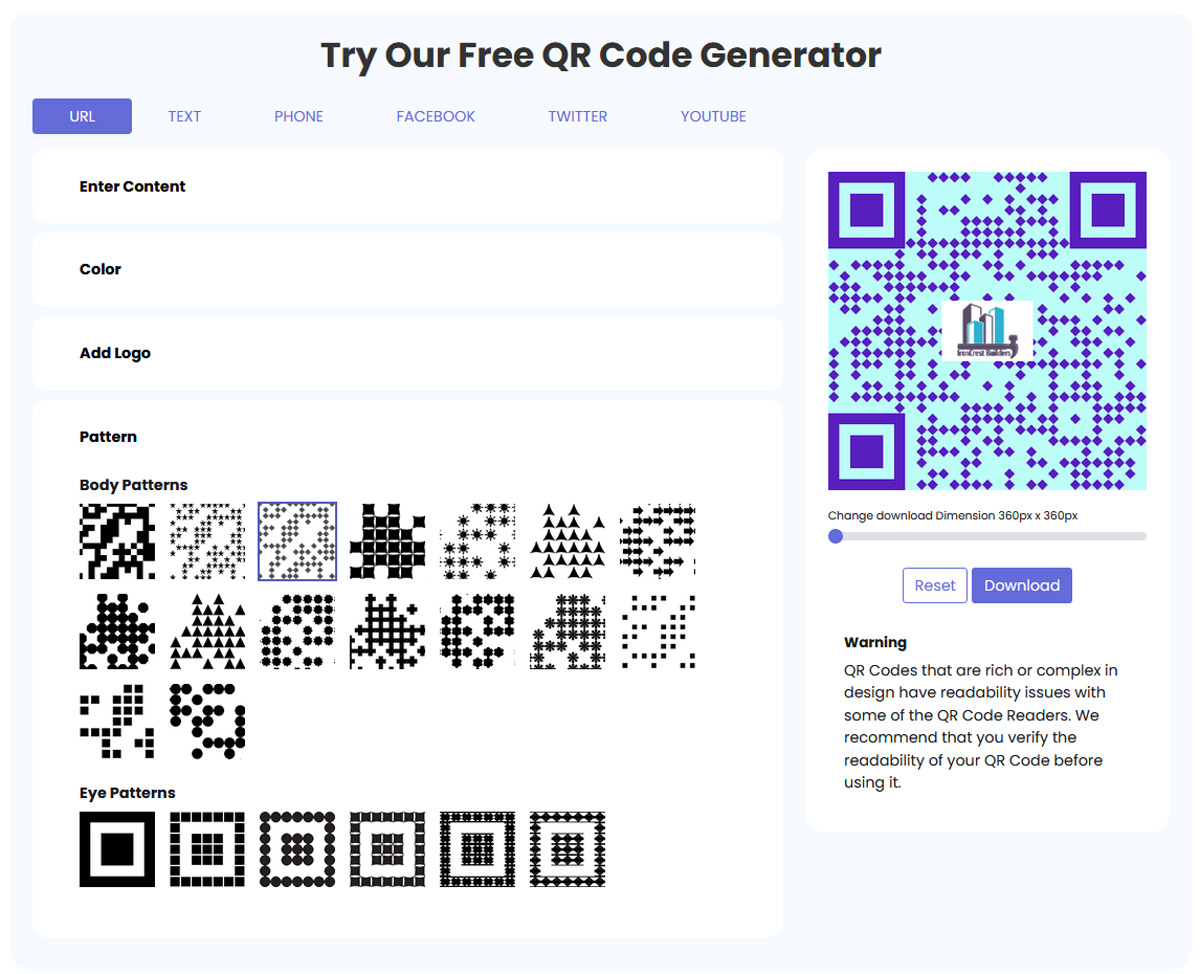
Choose a pattern for your customized QR code.
- Patterns: Select from various patterns for the QR code’s body and eyes (the squares in the corners). Different styles can give your QR code a unique look without affecting its functionality.
Step 3: Download and Use
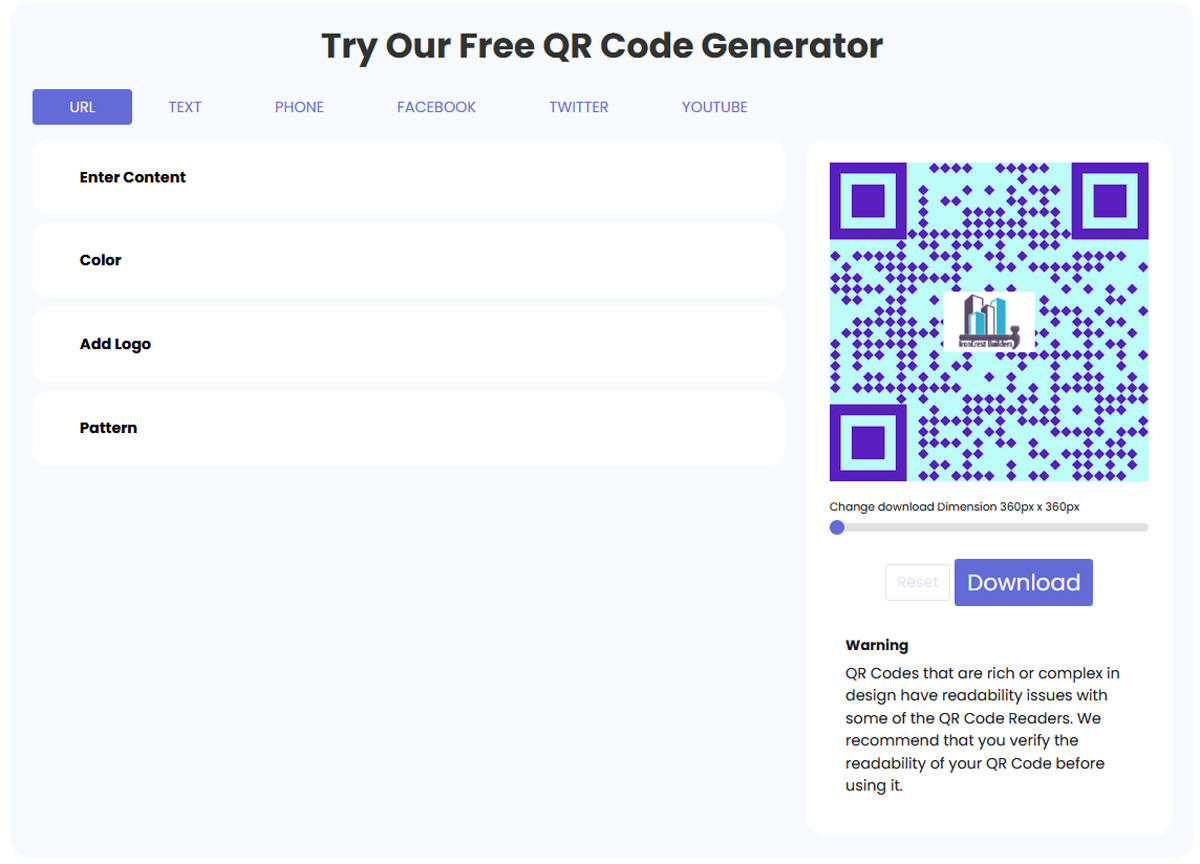
Download your customized QR code for use across platforms.
Once you’re happy with the design, download the QR code as a high-quality image file. Then you can add it to your marketing materials like flyers, packaging, business cards, or anywhere else your customers can scan it.
Scan, Connect, and Grow with a QR Code
QR codes may seem small, but their impact on marketing is anything but. From driving traffic to your website to collecting customer reviews and enhancing product packaging, they offer a quick and accessible way to engage your audience.
The best part? They’re easy to create, highly customizable, and incredibly versatile—perfect for small businesses looking to do more with less. A well-placed QR code can bridge the gap between your offline and online presence.
So don’t just market, make every interaction count with a scan.
